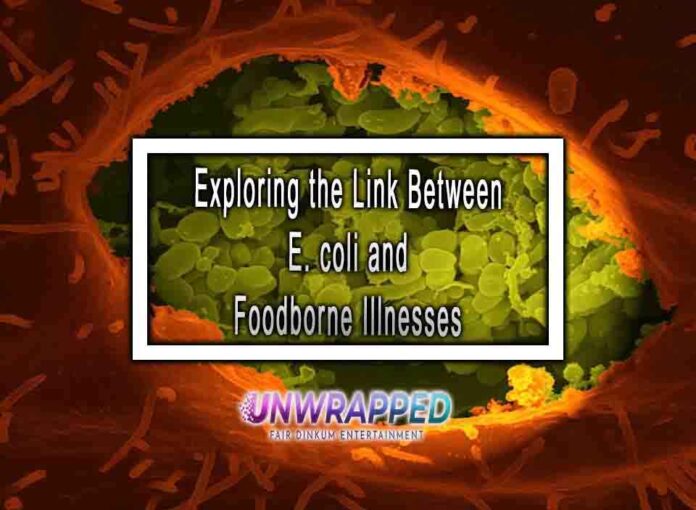Escherichia coli, commonly known as E. coli, is a type of bacteria that normally inhabits the intestines of humans and animals. While many strains of E. coli are harmless and even beneficial, certain strains can cause foodborne illnesses. Here, we’ll explore the link between E. coli and foodborne illnesses:
1. Pathogenic Strains:
- Examples: Enterohemorrhagic E. coli (EHEC), Shiga toxin-producing E. coli (STEC).
- Effects: Pathogenic strains of E. coli can produce toxins, such as Shiga toxins, that can lead to various symptoms, including severe abdominal cramps, diarrhea (often bloody), vomiting, and sometimes fever. In severe cases, it can progress to hemolytic uremic syndrome (HUS), a condition that can lead to kidney failure.

2. Transmission through Contaminated Food:
- Sources: Contaminated undercooked ground beef, raw milk, unpasteurized juices, raw vegetables, and contaminated water are common sources of E. coli infection.
- Transmission: The bacteria can be transferred to food during the processing and handling stages, especially when proper hygiene and sanitation practices are not followed.
3. Cross-Contamination:
- Transmission Routes: Cross-contamination can occur when juices from raw meat come into contact with ready-to-eat foods or surfaces that will be used for other foods.
- Prevention: Proper food handling, cooking meat to safe temperatures, avoiding unpasteurized products, and maintaining good hygiene practices are crucial for preventing cross-contamination.
4. Outbreaks and Food Recalls:
- Incidents: E. coli outbreaks are occasionally linked to contaminated food products. This can lead to widespread illnesses and, in some cases, food recalls to prevent further consumption of the contaminated products.
- Investigation: Public health agencies conduct thorough investigations to trace the source of contamination and prevent the spread of the bacteria.
5. Leafy Greens and Fresh Produce:
- Concerns: E. coli contamination has been associated with leafy greens and fresh produce, often linked to contamination through contaminated irrigation water, soil, or contact with animal feces.
- Prevention: Washing fruits and vegetables thoroughly, avoiding cross-contamination, and choosing produce from reputable sources can help reduce the risk.
6. Undercooked Ground Beef:
- Risk: Ground beef poses a risk of E. coli contamination, especially when it is undercooked. Consuming rare or undercooked burgers can increase the likelihood of infection.
- Safe Cooking: Cooking ground beef to a safe internal temperature (160°F or 71°C) helps kill harmful bacteria and ensures safe consumption.
7. HUS and Severe Complications:
- Complications: In some cases, particularly in children and the elderly, infection with certain E. coli strains can lead to HUS, a condition that involves the destruction of red blood cells, low platelet count, and kidney failure.
- Medical Attention: Individuals with severe symptoms, especially bloody diarrhea, should seek medical attention promptly.
Conclusion:
E. coli-related foodborne illnesses highlight the importance of safe food handling, cooking practices, and overall food safety measures. While many strains of E. coli are harmless, awareness and adherence to proper hygiene and food safety guidelines are crucial to prevent infections and the associated complications. Public health efforts, including surveillance, investigation of outbreaks, and education, play essential roles in minimizing the risks associated with pathogenic E. coli strains.











